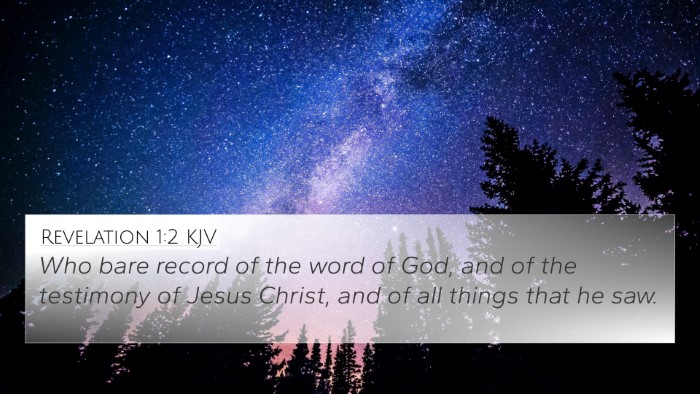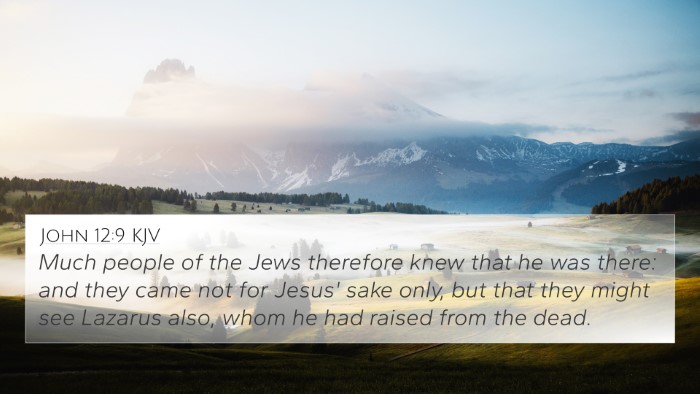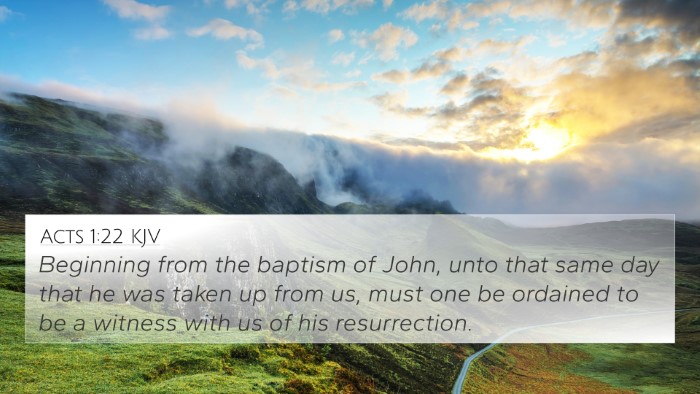Understanding John 12:17
Verse: John 12:17 - "The people therefore that was with him when he called Lazarus out of his grave, and raised him from the dead, bare record."
This poignant verse encapsulates a moment of incredible significance in the life of Jesus Christ. It not only serves as a literal account of the event but also symbolizes the broader themes of testimony, faith, and the acknowledgment of divine power.
Context and Analysis
In this verse, we see that the crowd present at the raising of Lazarus is responding to the miraculous event by providing a testimony of what they have witnessed. This highlights their role as witnesses and underscores the importance of personal testimony in proclaiming the works of Christ.
Thematic Connections
- Testimony of Faith: The act of recounting the miracle demonstrates the need for believers to share their experiences of Jesus.
- Identification with Christ: Those who witnessed Lazarus' return from the dead were intimately connected to Jesus' ministry and the supernatural authority he held.
- Foreshadowing the Resurrection: This miracle acts as a precursor to Christ's own resurrection, setting the stage for understanding death and eternal life in Christian doctrine.
Bible Verse Cross-References
To deepen understanding, this verse correlates with numerous other passages throughout the Bible. Here are some notable cross-references:
- John 11:1-44 - The full account of Lazarus being raised.
-
- Luke 7:11-17 - The account of Jesus raising the widow's son at Nain, illustrating His power over death.
- Matthew 27:52-53 - The resurrection of many saints at Jesus’ crucifixion, reinforcing the theme of resurrection.
- John 5:28-29 - The promise of resurrection for all who are in their graves, connecting to the theme of life after death.
- Revelation 1:18 - Jesus declares Himself as the One who was dead and is now alive, emphasizing His authority over death.
- 1 Corinthians 15:55-57 - A victorious proclamation over death, linking to the hope given through Christ.
- Romans 6:4 - We are buried with Christ in baptism, that we may also walk in newness of life, symbolizing our resurrection in Him.
Insights from Commentaries
Commentaries from respected biblical scholars like Matthew Henry, Albert Barnes, and Adam Clarke provide valuable insights on this verse:
- Matthew Henry: Henry emphasizes the importance of eyewitness accounts in establishing the truth of Jesus' miracles, strengthening the faith of the believers and serving as a testament for future generations.
- Albert Barnes: Barnes notes that the crowd's response is significant as it reflects the movement of faith, and how witnessing can lead to a broader acceptance of Jesus as the Messiah.
- Adam Clarke: Clarke highlights the thematic elements of resurrection and redemption, illustrating that the miracle signifies Jesus’ authority and the hope it brings to believers regarding eternal life.
Connecting with Other Scriptures
By examining John 12:17 in the light of other scriptures, we can better understand its implications:
- Identifying connections between Old and New Testament: The miracles in the Gospels, especially the raising of Lazarus, resonate with themes found in the prophetic texts of the Old Testament, showcasing God's power to revive and restore.
- Cross-referencing Psalms with New Testament teachings: Much like the Psalms express hope amidst despair, the miracle of Lazarus too serves as a declaration of God's faithfulness and power.
Application for Believers
The implications of John 12:17 extend beyond mere historical context; they present practical applications for believers today:
- Sharing personal testimonies: Just as the witnesses bore record of Lazarus’ resurrection, individuals today are encouraged to share their own testimonies of faith in Christ’s transformative power.
- Embracing the hope of resurrection: This scripture serves as a reminder of the Christian hope in eternal life, encouraging followers to focus on spiritual realities.
Concluding Remarks



















